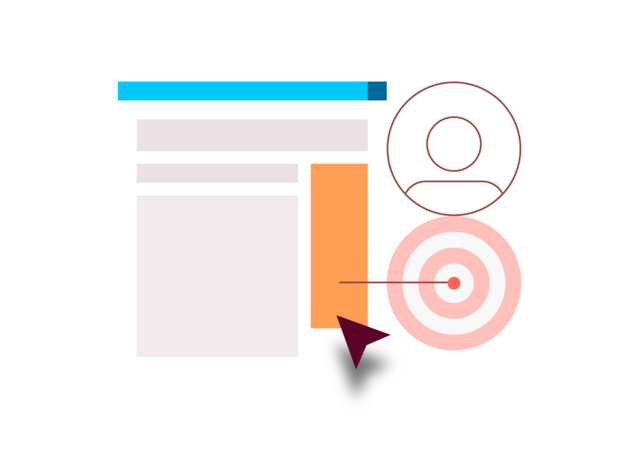Why create a chemical marketing plan?
Why should you create a marketing plan for your chemical business? Marketing chemicals to new customers is always a challenge. But it doesn’t have to be difficult, especially in today’s raw materials and ingredients market — where you can use newer, more cost-effective digital tools to convert leads into customers.
A marketing plan helps you to take a more scientific approach to marketing. It requires you to:
Think carefully about how you want to spend your marketing dollars.
Make sure your spending aligns with your business goals.
Measure the effectiveness of your campaigns at the end of the year.
A marketing plan can also help you to:
- Set a realistic budget — for your marketing efforts.
- Make your efforts more efficient — by setting a goal.
- Consciously choose tactics — then measure their effectiveness.
- Measure the overall effectiveness — of your marketing strategies, year over year.
Read on to learn how you can create an effective marketing plan for your chemical business.
How do you create a marketing plan?
The five steps to creating a good marketing plan for a chemical business include:

Step 1 — Choose a target audience
When you’re ready to find new customers for your raw materials or ingredient, the first question to ask yourself is:
Who buys our product?
Knowing which companies, industries, and job roles buy your products will ultimately help you choose the right industrial marketing tactics — whether it’s more traditional outbound marketing, or newer, digital inbound marketing (ideally, you’ll use a mix of both).
Real-life examples
So, what does this look like in real life? Let’s take a peek at how a chemical marketing plan works, using three different raw materials and ingredients. These three raw materials and ingredients are being sold to different audiences:
Organic butter CO2 extract
Target audience - Organic baked goods and frozen food manufacturers in Europe.
Betaine alternative for personal care cleansers
Target audience - “All natural” shampoo and facial cleanser manufacturers in the U.S.
Production-grade thermoplastic for industrial 3D printing
Target audience - Industrial 3D printing companies that create industrial prototypes.
Step 2 — Define your goals
Your next step is to write specific, measurable goals for the coming year. What do you want to achieve with your marketing efforts over the next 12 months?
Organic butter CO2 extract
Target audience - Organic baked goods and frozen food manufacturers in Europe.
Goal - Sign 12 new clients by Dec. 31.
Betaine alternative for personal care cleansers
Target audience - “All natural” shampoo and facial cleanser manufacturers in the U.S.
Goal - Get 1,000 clicks on UL Prospector® searches of our newest product in 2020.
Production-grade thermoplastic for industrial 3D printing
Target audience - Industrial 3D printing companies that create industrial prototypes.
Goal - Sell $250,000 (USD) of product in the next 12 months.
Step 3 — Create a cost-effective marketing plan
Next, create a budget for your chemical marketing plan. This budget will guide which marketing tactics to choose. For example:
Organic butter CO2 extract
Target audience - Organic baked goods and frozen food manufacturers in Europe.
Goal - Sign 12 new clients by Dec. 31.
Budget - $50,000 (USD).
Betaine alternative for personal care cleansers
Target audience - “All natural” shampoo and facial cleanser manufacturers in the U.S.
Goal - Get 1,000 clicks on UL Prospector® searches of our newest product in 2020.
Budget - 1.5% of annual revenue.
Production-grade thermoplastic for industrial 3D printing
Target audience - Industrial 3D printing companies that create industrial prototypes.
Goal - Sell $250,000 (USD) of product in the next 12 months.
Budget - $13,800 (USD)/year.
Step 4 — Choose your marketing tactics
Finally, you’ll want to add some specific marketing tactics to your plan. Look for a good mix of inbound and outbound strategies.
This may require some experimentation from year to year, as you measure your success (step 5) — and see which tactics work best for your business.
Inbound marketing — allows new customers to discover your business and products through web content — such as your website, social media, blogs, articles, white papers.
Outbound marketing — includes more traditional forms of manufacturing marketing — such as cold calling, trade shows, print ads, digital ads, emails and newsletters.
Applying these concepts to our existing examples might look like the following:
Organic butter CO2 extract
Target audience - Organic baked goods and frozen food manufacturers in Europe.
Goal - Sign 12 new clients by Dec. 31.
Budget - $50,000 (USD).
Tactics:
- Visit two new manufacturers every month.
- Run four pay-per-click ads on Google.
- Participate in three trade shows this year.
- Run one print ad for four quarters in an industry journal.
Betaine alternative for personal care cleansers
Target audience - “All natural” shampoo and facial cleanser manufacturers in the U.S.
Goal - Get 1,000 clicks on UL Prospector® searches of our newest product in 2020.
Budget - 1.5% of annual revenue.
Tactics:
- Publish two blogs/month for 12 months.
- Write one new white paper for formulators.
- Cold-call three companies per week.
Production-grade thermoplastic for industrial 3D printing
Target audience - Industrial 3D printing companies that create industrial prototypes.
Goal - Sell $250,000 (USD) of product in the next 12 months.
Budget - $13,800 (USD)/year.
Tactics:
- Run four digital ads on Prospector.
- Send e-newsletter to 500 client leads every month.
- Publish five technical articles.
Step 5 — Measure your success
Check on your progress every three months to find out:
- How much new business has each marketing tactic earned so far?
- How much progress has been made toward your overall goal (in revenue, new customers, product sold, etc.)?
- How much money have you spent on each marketing tactic?
- How much of the total marketing budget have you spent so far?
See which marketing tactics work well, and which need to be changed. Then share your progress with staff — and use the learnings specific to your chemical business to revise your marketing plan for next year.
Need help executing a marketing plan for your chemical business?
Get connected with our sales team
Thanks for your interest in our products and services. Let's collect some information so we can connect you with the right person.



